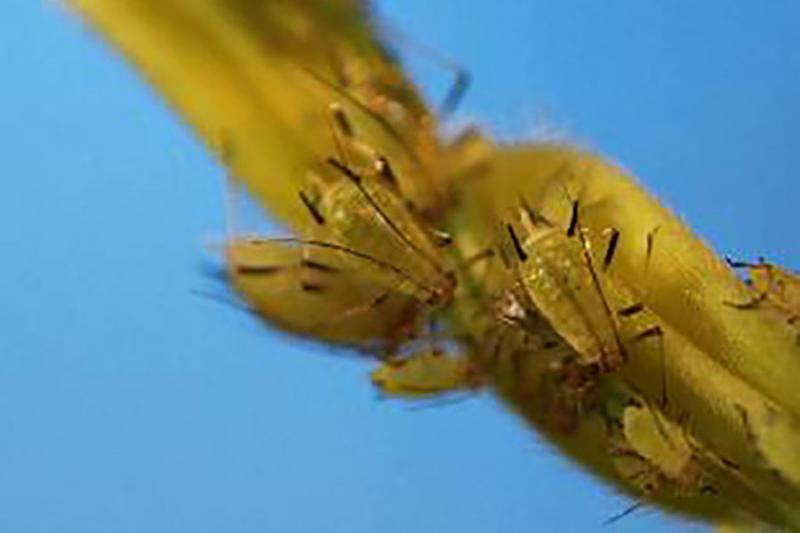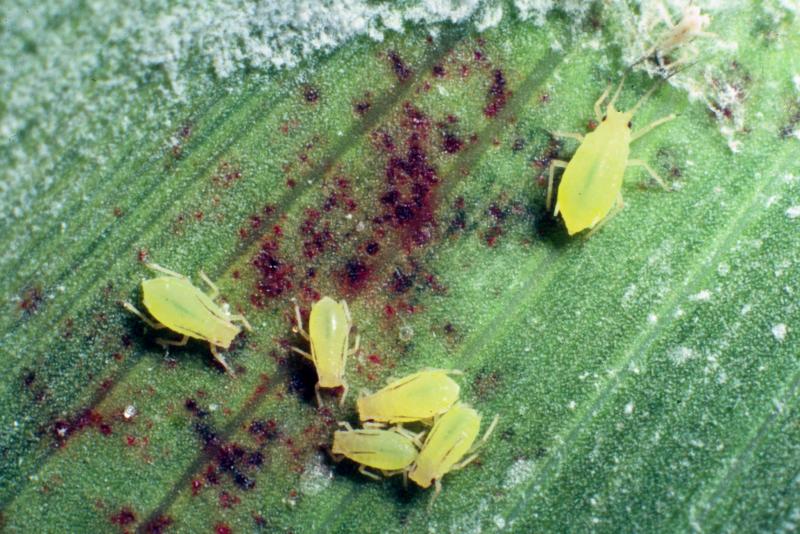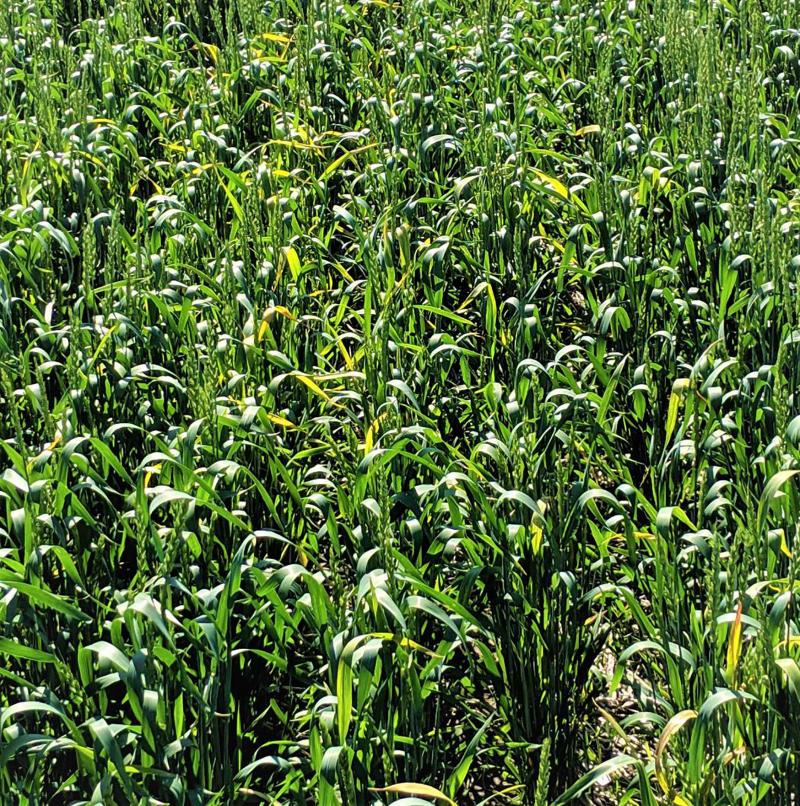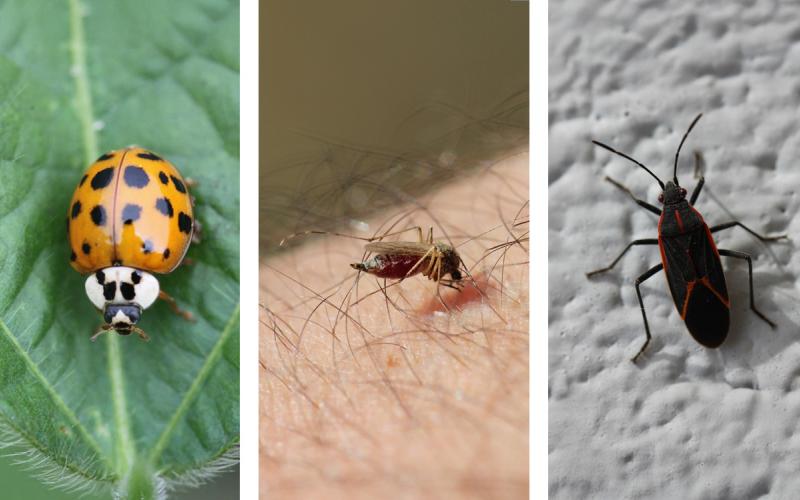Originally Published: June 20, 2019
Written with contributions by Emmanuel Byamukama, former SDSU Extension Plant Pathologist and Ruth Beck.
During the past couple of weeks, reports of aphid populations in wheat fields have slowly been increasing. Typically, the initial aphid populations are observed earlier in the season, but the 2019 spring may have delayed infestations. So far, the populations have been relatively small but there is the potential for them to grow rapidly as conditions become more favorable. The most commonly observed aphids currently are the English grain aphid, but there is the possibility for other species to be observed. The other two species of aphids are the bird cherry oat aphid and greenbug.
Aphid Identification

Bird Cherry Oat Aphids
Bird cherry oat aphids can vary in color from olive to dark green and can be identified by the characteristic burnt red-orange patch that is present on the end of the abdomen near the cornicles or “tailpipes” (Figure 1).

English Grain Aphids
English grain aphids can vary in color from light or dark green to brown, and can be identified by characteristic black antennae, cornicles, and leg joints (Figure 2).

Greenbugs
Greenbugs are a species of aphids that are light green in color and can be identified by the dark green stripe present on their back. Feeding by this species causes yellow discoloration and red spots on the leaves, due to a toxin present in its saliva (Figure 3).
Scouting Wheat for Aphids
To scout wheat for aphid populations the easiest way is to start at one side of the field and walk in a “W” of “Z” pattern. While walking either pattern, randomly choose twenty plants from each leg and examine for aphids. During the spring, aphids are most commonly observed on the leaves and stems of the plants. Table 1 contains the economic thresholds for the three aphid species. If populations exceed thresholds, please refer to the most current edition of the South Dakota Pest management Guide: Wheat. As mentioned, the cool, wet conditions that were experienced during the start of this year likely slowed the development of aphid populations down. But warmer weather will encourage more rapid populations growth.
| Pest |
|
||||
|---|---|---|---|---|---|
| Seedling Stage |
Boot to Heading Stage |
Flowering Stage |
Milky Ripe Stage |
Milk to Medium Dough Stage |
|
| Bird Cherry Oat Aphid | 20 | 30 | >5 | 10 | >10 |
| English Grain Aphid | 30 | 50 | 5 | 10 | >10 |
| Greenbug | 5-15 | 25 | >25 | >25 | >25 |
Barley Yellow Dwarf Virus

The three aphid species can transmit Barley yellow dwarf virus (BYDV) (Figure 4). However, aphids being found in winter wheat at this time are not responsible for BYDV symptoms being observed at this time. These symptoms are from fall infections. BYDV infections that take place at this time may not have impact on yield since winter wheat plants are further along.


